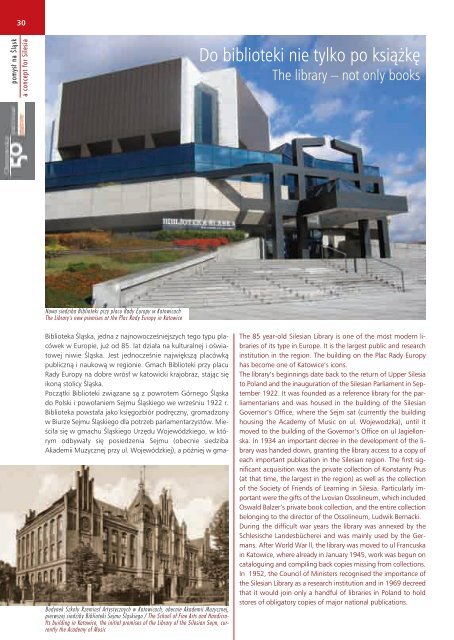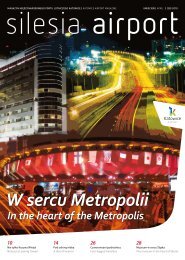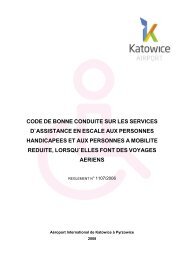pobierz - Katowice
pobierz - Katowice
pobierz - Katowice
Create successful ePaper yourself
Turn your PDF publications into a flip-book with our unique Google optimized e-Paper software.
30<br />
pomysł na Śląsk<br />
a concept for Silesia<br />
Do biblioteki nie tylko po książkę<br />
The library – not only books<br />
Nowa siedziba Biblioteki przy placu Rady Europy w Katowicach<br />
The Library's new premises at the Plac Rady Europy in <strong>Katowice</strong><br />
Biblioteka Śląska, jedna z najnowocześniejszych tego typu placówek<br />
w Europie, już od 85. lat działa na kulturalnej i oświatowej<br />
niwie Śląska. Jest jednocześnie największą placówką<br />
publiczną i naukową w regionie. Gmach Biblioteki przy placu<br />
Rady Europy na dobre wrósł w katowicki krajobraz, stając się<br />
ikoną stolicy Śląska.<br />
Początki Biblioteki związane są z powrotem Górnego Śląska<br />
do Polski i powołaniem Sejmu Śląskiego we wrześniu 1922 r.<br />
Biblioteka powstała jako księgozbiór podręczny, gromadzony<br />
w Biurze Sejmu Śląskiego dla potrzeb parlamentarzystów. Mieściła<br />
się w gmachu Śląskiego Urzędu Wojewódzkiego, w którym<br />
odbywały się posiedzenia Sejmu (obecnie siedziba<br />
Akademii Muzycznej przy ul. Wojewódzkiej), a później w gma-<br />
Budynek Szkoły Rzemiosł Artystycznych w Katowicach, obecnie Akademii Muzycznej,<br />
pierwszej siedziby Biblioteki Sejmu Śląskiego / The School of Fine Arts and Handicrafts<br />
building in <strong>Katowice</strong>, the initial premises of the Library of the Silesian Sejm, currently<br />
the Academy of Music<br />
The 85 year-old Silesian Library is one of the most modern libraries<br />
of its type in Europe. It is the largest public and research<br />
institution in the region. The building on the Plac Rady Europy<br />
has become one of <strong>Katowice</strong>’s icons.<br />
The library’s beginnings date back to the return of Upper Silesia<br />
to Poland and the inauguration of the Silesian Parliament in September<br />
1922. It was founded as a reference library for the parliamentarians<br />
and was housed in the building of the Silesian<br />
Governor’s Office, where the Sejm sat (currently the building<br />
housing the Academy of Music on ul. Wojewodzka), until it<br />
moved to the building of the Governor’s Office on ul Jagiellonska.<br />
In 1934 an important decree in the development of the library<br />
was handed down, granting the library access to a copy of<br />
each important publication in the Silesian region. The first significant<br />
acquisition was the private collection of Konstanty Prus<br />
(at that time, the largest in the region) as well as the collection<br />
of the Society of Friends of Learning in Silesia. Particularly important<br />
were the gifts of the Lvovian Ossolineum, which included<br />
Oswald Balzer’s private book collection, and the entire collection<br />
belonging to the director of the Ossolineum, Ludwik Bernacki.<br />
During the difficult war years the library was annexed by the<br />
Schlesische Landesbücherei and was mainly used by the Germans.<br />
After World War ll, the library was moved to ul Francuska<br />
in <strong>Katowice</strong>, where already in January 1945, work was begun on<br />
cataloguing and compiling back copies missing from collections.<br />
In 1952, the Council of Ministers recognised the importance of<br />
the Silesian Library as a research institution and in 1969 decreed<br />
that it would join only a handful of libraries in Poland to hold<br />
stores of obligatory copies of major national publications.















